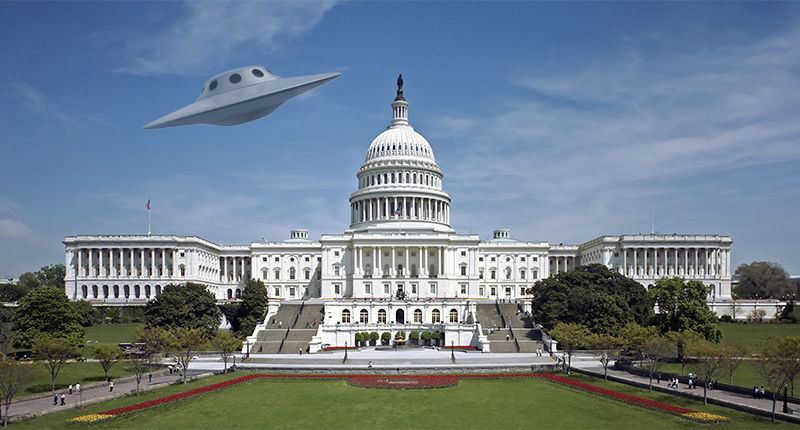For years, the U.S. military, in conjunction with NASA, has been gathering information to write a report about unidentified anomalous phenomena (UAP), a phrase less recognizable than unidentified flying object (UFO). But as information is gathered, most of what is shared with the public is slim as most becomes classified intelligence.
Politico Magazine published a report Thursday complaining that the American public is being kept in the dark. The only thing that is clear, it said, is that there is a team of national security experts and military personnel dedicated to finding the truth about what is being observed in the skies by the FAA and military planes.
"But there’s always been a stubborn percentage of UFO and UAP sightings that can’t be dismissed as known phenomena or technology" — or even national security threats like spy balloons, author Garrett Graff wrote.
"Depending on the exact data set and timespan, the percentage of true 'unknown unknowns' ranges from around 5 percent up to 20 percent. No one knows what those sightings actually are. Put another way: There appear to be true UFOs and UAPs, mysteries we can’t solve."
ALSO READ: Sudden sunlight: GOP House hopeful reveals personal finances after Raw Story investigation
"In recent years, repeated congressional hearings have had Pentagon officials and experienced naval aviators testify they have encountered craft or phenomena that appear to defy known physics, technologies more advanced than anything the U.S. understands."
Given the U.S. spends nearly a trillion dollars on national defense, Graff lamented that the "U.S. government doesn’t take these questions more seriously."
In a hearing earlier this year, the military representatives explained that they only study UAPs that are observed by federal entities like the FAA or military pilots. They currently don't have the staffing to crosscheck the sightings with military and Americans on the ground. At the same time, when an everyday American spots something odd in the sky, if a federal official doesn't observe, then it doesn't make the list.
"The military efforts have always been low-level and low-budget — a handful of personnel, based for decades at the Wright-Patterson Air Force Base in Dayton, Ohio," said Graff.
When it comes to a very different search, the one for extraterrestrial life, Graff wrote that the funds available are even smaller.
He goes on to begin a list of what he thinks the blueprint should be to craft a legitimate search.
His first demand is to remove the UAP program from the military intelligence, and he said that so many of the UAPs could have to do with unknown technology and relate more to national security than it does military. What is needed are people with a background in science and technology.
Second, the program has to coordinate with other countries across the globe. The search isn't a U.S. one, it's one and UAPs don't appear only over the U.S. It's time to share the data and the related third is that it should be transparent, he argues.
"Fourth, we must build an effort that’s data-based and instruments-based," wrote Graff. "Our data on the UFO sightings people see and report is almost worthless; it’s too haphazard, incomplete, and unreplicable. This was one of the key messages of this summer’s congressional hearings," he wrote.
A team of researchers and reporters could collaborate with the experts to sync the sightings with public vs. government observations.
Ryan Graves, the executive director of the organization Americans for Safe Aerospace, testified before the House Oversight and Accountability Subcommittee in July. Graff quotes him saying: “My recommendations would be to make that a sensor-centric operation in order to make it as objective as possible.”
Graff wrote, "We should look to the model of efforts like the Galileo Project, led by Harvard astronomy chair Avi Loeb, to map and study the sky on a comprehensive, routine basis to establish a better baseline of what’s strange and what’s not."
His final recommendation is that groups like SETI should be funded for the long term.
Graff continued to outline a plan for an honest and transparent way of handling the program at Politico Magazine.
Leave a Comment
Related Post
